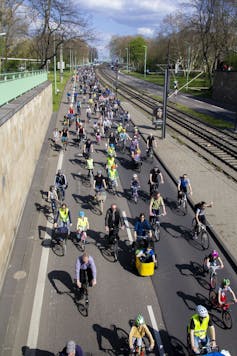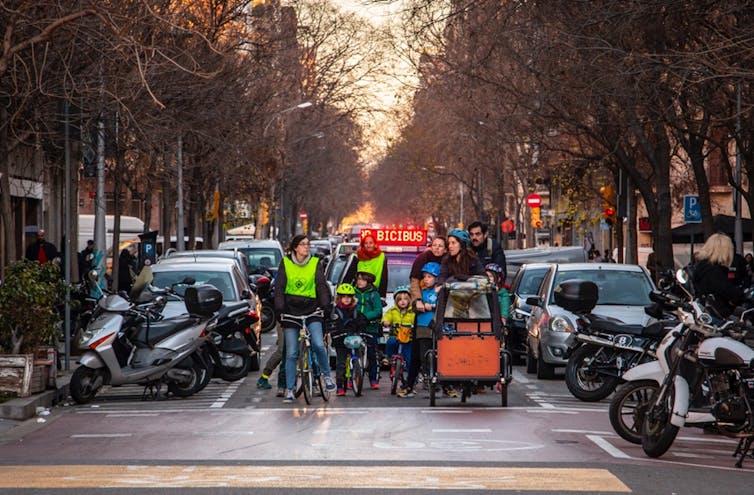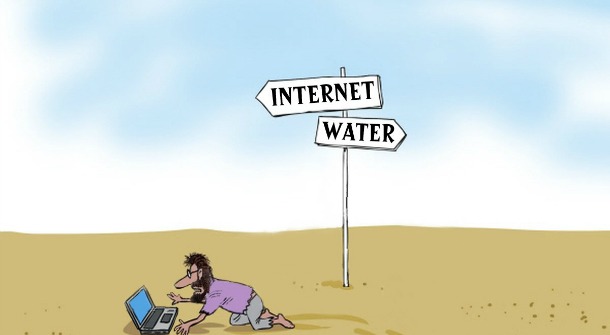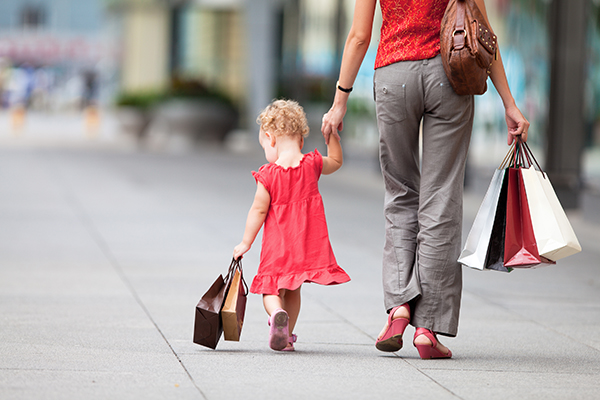
Urban development and social norms concerning childhood have led European cities to a situation where streets are no longer places for children and young people. Gill Valentine has explained that this shift has been fuelled by our division of children into two categories – ‘angels’ and ‘demons’.
She described how on one hand children are considered too small, vulnerable and innocent to roam and play in urban spaces because of traffic, ‘stranger-danger’ and other hazards. On the other hand, teenagers are constructed as a public threat and should not be allowed to hang out on the streets with their bikes, skateboards and presumably bad intentions.
Subsequent studies have continued to explain how these kinds of representations have caused children’s exclusion and ‘othering’ from public spaces in the complex web of urban governance, public life and parenting. Children’s autonomous movement and play in cities has steadily declined in recent decades. In turn, children and young people are increasingly sequestered in homes, cars or institutional spaces for adult-controlled education and play.
Many experts and interest groups have voiced their concerns about this and explained why closing the streets to children is bad policy. Children’s physical activity levels are alarmingly lowand limiting their sense of safety and autonomy also hampers their mental and social wellbeing. These trends are endangering the health of an entire generation and compromising their ability to uphold societies and economies with grim dependency ratios.
Not about breaking news. Not about unfounded opinions
At the same time, as often noted by childhood scholars, children should not be reduced to mere ‘future investments’ or ‘adults of tomorrow’. They are also people with present-day rights to citizenship, participation and autonomy in their living environments.
Old and new movements for the child-friendly city
However, there are many examples of how people have resisted children’s exclusion from the streets in modern history. One of the most notable ones was the Stop de Kindermoord (‘Stop child murder’) movement in the Netherlands in early 1970s. This aimed to curb child traffic fatalities, which, at the time, had peaked to the highest in Europe.
The movement organised demonstrations, pressured decision makers to pass legal and planning measures and created safe spaces through direct action and tactical urbanism. With success. Child safety rose up the agenda, and the campaigners continued to play an important role in traffic policies for over a decade. However, over time they were marginalised and traffic danger was largely re-established as a ‘natural’ part of urban childhood.
Half a century after the Stop de Kindermoord movement, we are witnessing another wave of civic activity sweeping across the globe but especially in Europe. Old and new strategies are deployed, but the message is similar: the campaigners want systemic change, not awareness campaigns on road safety.
Promoting safety vests, helmets and children’s traffic awareness are not strategies to curb traffic violence but to maintain it, as they offload the responsibility on individual children and parents. Instead the activists mobilise entire communities and use local demonstrations and experiments to provide people with concrete experiences of how cities could be different.
Taking action nowadays

Kidical Mass is a rapidly growing urban protest of parents, educators and children that organises colourful bicycle demonstrations in small and large cities. In 2022 it gathered over 90,000 children, young people and families over two campaign weekends in over 400 locations across Europe.
The organisers attest that Kidical Mass is a one-day-experiment that allows people to see city spaces in a different light and turn these experiences into political demand.
The movement’s political effect recently became very concrete in Germany, where the Transport Minister’s Conference supported a reform of the national road traffic law based on a petition handed in by Kidical Mass activists in 2022.
BiciBús (Bike Bus) is another growing movement. The goal is simple: to provide children with a guided group to cycle to school with a predefined route at a certain time. They usually run once a week, aiming to develop the habit of cycling for families and entire communities. Pedalling in groups is not only a way to safely arrive at school, but also fun, and a way to demonstrate for child-friendly cities.
The idea is not new, but in the last couple of years the number of children’s pedalling buses has grown rapidly, especially in Europe, thanks to social media.

School streets and play streets are also an important implication the new civic activity. Local advocacy groups (see for example Playing Out in the UK) are mobilising schools and local communities to create these open, inclusive, and safe urban spaces. Often the idea is to open certain stretches to children by limiting car traffic. In some places collaboration with decision makers and planners has led to concrete changes.
The campaigners attest that in the long term school streets and play streets should be connected to one another to create comprehensive, safe and inclusive mobility networks.
Ways forward?
In many respects the current civic movements for child-friendly cities are continuing the work of their predecessors. By claiming urban spaces, introducing citizen-led experiments and mobilising vast amounts of people, they create opportunities to see and think of alternative futures. What they want and what is only starting to emerge is the direct impact on more institutional processes, initiatives and frameworks.
Still, in a relatively short time they have left a mark. While physical infrastructures might take time to change, the way communities use them can change much faster. Mounting concerns on children’s wellbeing coupled with the need for an urgent sustainability transition of urban transport provide the movements with novel leverage.
Whether we will witness a major paradigm shift or not, it seems like in some respects the activists have already won. On their local pedalling buses, demonstrations and pop-up streets they are not only demanding a better tomorrow, but are already living it.
This article has been co-authored by Doctoral Researcher in Urban Planning, University of Amsterdam, Estudiante de doctorado, Universitat Autònoma de Barcelona, Urban planning, Universitat Autònoma de Barcelona and Professor in Urban Mobility Futures, University of Amsterdam. The article first appeared in The Conversation.












